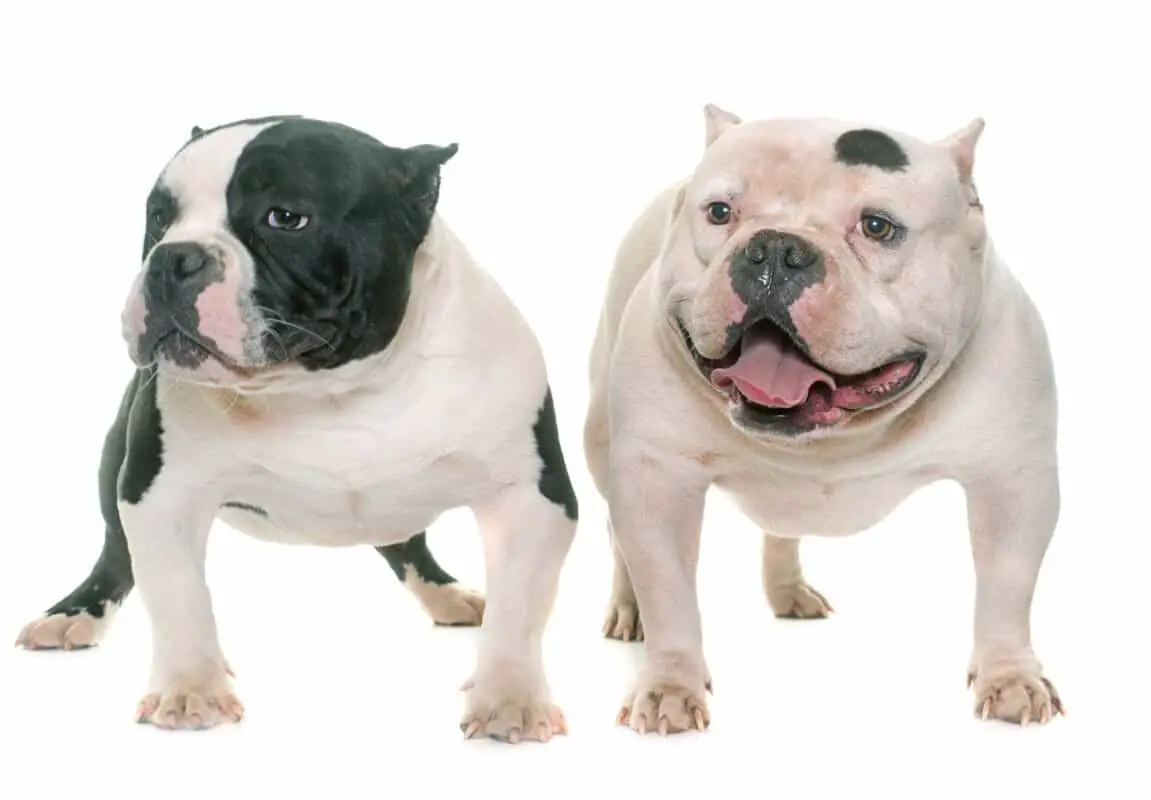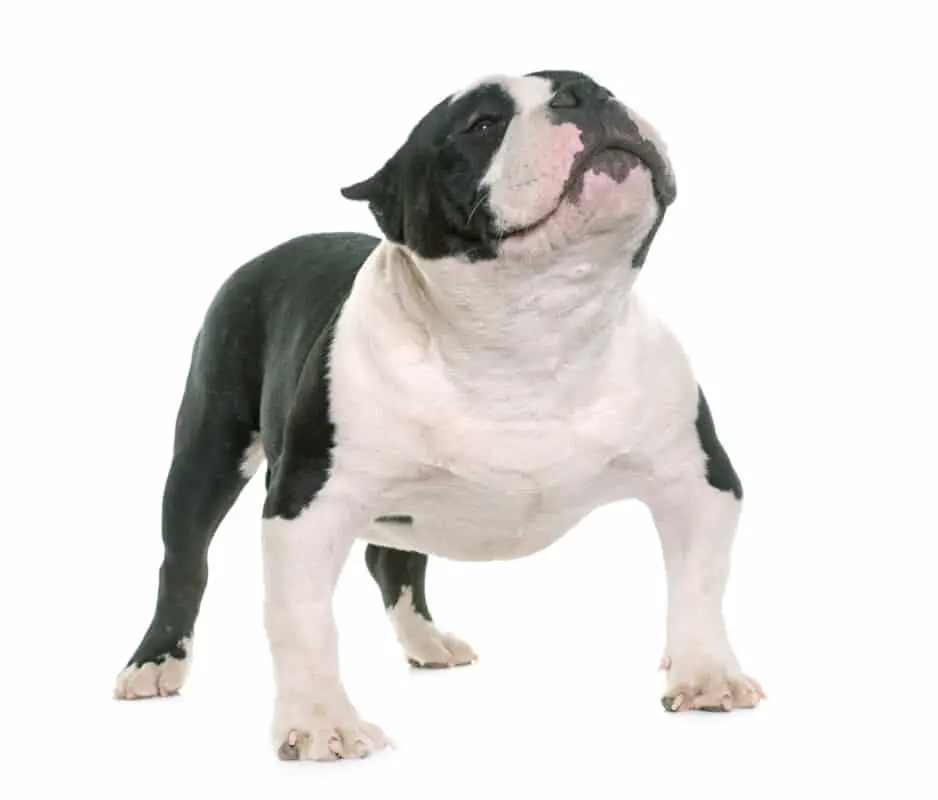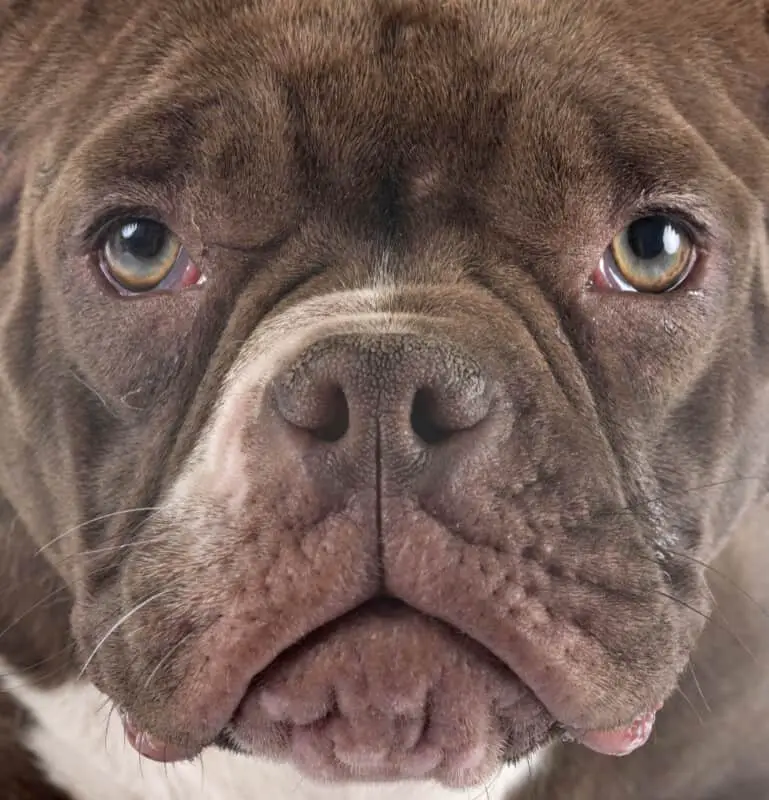This post contains affiliate links.
Potty training an American Bully puppy can be a challenging task for any dog owner. However, with the right approach and consistent training, it can be done successfully. The key is to start early and remain patient throughout the process.
One of the first things to consider when potty training an American Bully puppy is to establish a routine. Set regular feeding times and take your puppy outside to the designated potty area at consistent intervals. Praise your puppy when they go potty outside and avoid scolding them for accidents inside the house. It is also important to crate train your puppy for best results and remain consistent with the training schedule.
Additionally, providing positive reinforcement and consistency is key. This means using treats, praise, and positive reinforcement to encourage your puppy to go potty outside. Avoid using punishment or negative reinforcement as this can lead to fear and anxiety in your puppy. With patience and persistence, potty training your American Bully puppy can be a rewarding experience for both you and your furry friend.
Table of Contents
Understanding American Bully Puppies
What is an American Bully Puppy?
American Bully puppies are a breed of dog that is known for its muscular build and friendly temperament. They are a cross between American Pit Bull Terriers and Staffordshire Bull Terriers, and they were first bred in the 1990s. American Bully puppies can vary in size, but they typically weigh between 30 and 150 pounds and stand between 13 and 21 inches tall at the shoulder.
When is the Right Time to Start Potty Training?
Potty training an American Bully puppy should ideally start when the puppy is between 8 and 12 weeks old. This is the age when the puppy will start to develop bladder control and will be able to hold its urine for longer periods of time. It is important to start potty training early because it will help the puppy develop good habits and prevent accidents from happening in the house.
When potty training an American Bully puppy, it is important to be consistent with the training and to use positive reinforcement. This means praising the puppy when it goes potty outside and not scolding it when accidents happen inside. Crate training can also be helpful in potty training because it teaches the puppy to associate the crate with a safe and comfortable space, and it can help prevent accidents from happening when the puppy is unsupervised.
In summary, understanding American Bully puppies is important when it comes to potty training. Starting potty training at the right age and being consistent with the training can help the puppy develop good habits and prevent accidents from happening in the house. Using positive reinforcement and crate training can also be helpful in potty training an American Bully puppy.
Preparing for Potty Training
Potty training an American Bully puppy requires some preparation and patience. Here are some things to consider before you start.
Setting a Schedule
Setting a schedule is one of the most important things you can do to potty train your American Bully puppy. Puppies need to go potty frequently, especially after meals, naps, and playtime. A good rule of thumb is to take your puppy out every 30 minutes to an hour during the day.
It’s also important to take your puppy out first thing in the morning, before bedtime, and after any extended periods of time in the crate. Consistency is key when it comes to potty training, so try to stick to a schedule as much as possible.
Designating a Potty Area
Designating a specific area for your puppy to go potty can help with potty training. Choose an area that is easy to access and away from high-traffic areas of your home. Use a consistent command, such as “go potty,” to encourage your puppy to go in the designated area.
Choosing a Crate
Crate training can be a useful tool for potty training your American Bully puppy. Choose a crate that is big enough for your puppy to stand up, turn around, and lie down comfortably.
Make sure the crate is in a quiet, low-traffic area of your home and that your puppy has access to water and toys while inside. Never use the crate as a punishment, and be sure to take your puppy out for potty breaks frequently.
Feeding Schedule
Establishing a regular feeding schedule can help with potty training. Feed your American Bully puppy at the same times each day, and take away any uneaten food after 20 minutes.
After meals, take your puppy out for a potty break, and be sure to praise them when they go in the designated area. Avoid feeding your puppy too close to bedtime to minimize accidents during the night.
By preparing for potty training with a schedule, designated potty area, crate training, and feeding schedule, you can set your American Bully puppy up for success. With patience and consistency, your puppy will be potty trained in no time.
Potty Training Techniques
Potty training an American Bully puppy can be a challenging task, but with patience and consistency, it can be accomplished successfully. There are several potty training techniques that can be used, including positive reinforcement, crate training, paper training, and artificial grass. Each technique has its own advantages and disadvantages, and it is important to choose the one that works best for your puppy.
Positive Reinforcement
Positive reinforcement is a popular potty training technique that involves rewarding your puppy for good behavior. This technique involves giving your puppy a treat or praise when they go potty outside. It is important to use treats that are small and healthy, such as small pieces of chicken or cheese. Using a leash during potty breaks can also help your puppy associate going potty with a specific location.
Crate Training
Crate training is another effective potty training technique that involves using a crate to confine your puppy when you are unable to supervise them. This technique teaches your puppy to hold their bladder and bowels until they are taken outside. It is important to choose a crate that is the right size for your puppy and to make the crate a comfortable and inviting space. Using a feeding schedule can also help regulate your puppy’s potty breaks.
Paper Training
Paper training is a potty training technique that involves using puppy pads or newspapers to teach your puppy where to go potty. This technique is useful for puppies who live in apartments or for owners who are unable to take their puppy outside frequently. It is important to place the puppy pads or newspapers in a specific location and to gradually move them closer to the door over time.
Artificial Grass
Artificial grass is a potty training technique that involves using a special type of grass that is designed to look and feel like real grass. This technique is useful for puppies who live in apartments or for owners who are unable to take their puppy outside frequently. It is important to choose artificial grass that is easy to clean and maintain, and to place it in a specific location that is easily accessible to your puppy.
In conclusion, there are several potty training techniques that can be used to train an American Bully puppy. It is important to choose the technique that works best for your puppy and to be consistent and patient throughout the training process. By using positive reinforcement, crate training, paper training, or artificial grass, you can successfully potty train your puppy and enjoy a happy and healthy relationship with them.
Signs Your American Bully Puppy Needs to Go
One of the most important aspects of potty training your American Bully puppy is to recognize the signs that they need to go. Here are some common cues that your puppy needs to urinate or defecate:
-
Whimpering or whining: When your puppy needs to go, they may start to whimper or whine to get your attention. This is a clear sign that they need to be taken outside.
-
Pacing or circling: Your puppy may start to pace or circle around a specific area when they need to go. This is a natural instinct for dogs, and it’s important to recognize this behavior so you can take them outside as soon as possible.
-
Sniffing around: Your puppy may start to sniff around the room or the floor when they need to go. This is a sign that they are trying to find a spot to urinate or defecate.
-
Barking or scratching: Some puppies may bark or scratch at the door to let you know that they need to go outside. It’s important to pay attention to these cues and take your puppy outside immediately.
It’s important to note that every puppy is different, and they may have their own unique cues for when they need to go. Pay attention to your puppy’s behavior and try to recognize any patterns or signals that they give you.
In addition to these cues, it’s important to establish a regular potty schedule for your puppy. Take them outside first thing in the morning, after meals, and before bedtime. This will help them learn when it’s time to go and reduce the likelihood of accidents inside the house.
Remember, potty training takes time and patience. Be consistent with your training and reward your puppy for good behavior. With time and practice, your American Bully puppy will become fully potty trained.
Dealing with Accidents
Even with consistent and careful potty training, accidents can still happen with American Bully puppies. It’s important to handle accidents calmly and without punishment to avoid confusing or scaring the puppy.
Supervision
One of the most effective ways to prevent accidents is to supervise your puppy closely. Keep them within eyesight at all times, and if you can’t watch them, confine them to a crate or playpen. This will help you catch any accidents as they happen and prevent your puppy from developing bad habits.
Cleaning Up
When accidents do happen, it’s crucial to clean them up thoroughly to eliminate any odors that can attract your puppy back to the same spot. Use a pet-specific cleaner to remove any traces of urine or feces, and consider using odor absorbers or air fresheners to keep your home smelling fresh.
It’s important to note that yelling or hitting your puppy in response to accidents is never appropriate. This can scare your puppy and make them afraid to potty in front of you, making potty training even more difficult.
In addition to supervision and cleaning up, it’s important to continue with a consistent routine of potty breaks and positive reinforcement. With patience, love, and consistency, your American Bully puppy will soon be fully potty trained and a well-behaved member of your household.
Obedience Training
Obedience training is essential for every American Bully puppy. It helps them learn basic commands and signals, which makes it easier for them to understand what you want them to do. In this section, we will discuss basic commands and training cues that can help you train your American Bully puppy.
Basic Commands
Basic commands are the foundation of obedience training. Here are some of the basic commands that your American Bully puppy should learn:
- Sit: This is the most basic command that every dog should learn. You can teach your puppy to sit by holding a treat above their head and saying “sit.” When they sit, give them the treat and praise them.
- Stay: This command teaches your puppy to stay in one place until you tell them to move. You can teach your puppy to stay by saying “stay” and holding your hand up in front of them. Start with a few seconds and gradually increase the time.
- Come: This command teaches your puppy to come to you when called. You can teach your puppy to come by saying “come” and then rewarding them with a treat when they come to you.
Training Cues
Training cues are signals that you can use to communicate with your American Bully puppy. Here are some training cues that you can use:
- Verbal cues: Verbal cues are words that you can use to communicate with your puppy. For example, you can use the word “no” to tell your puppy to stop doing something.
- Hand signals: Hand signals are gestures that you can use to communicate with your puppy. For example, you can use a hand signal to tell your puppy to sit.
- Body language: Body language is the way that you hold your body to communicate with your puppy. For example, you can use a relaxed body posture to show your puppy that you are not a threat.
In conclusion, obedience training is an important part of raising an American Bully puppy. By teaching your puppy basic commands and training cues, you can help them become well-behaved and obedient. Remember to be patient and consistent in your training, and always reward your puppy for good behavior.
Conclusion
In conclusion, potty training an American Bully puppy requires patience, consistency, and positive reinforcement. It is important to establish a routine and stick to it, including feeding times and playtime. Bonding with your puppy is also crucial, as they are more likely to follow your lead when they feel a strong connection with you.
Mistakes will happen, but it is important to remain calm and avoid punishing your puppy. Instead, redirect their attention to the appropriate potty area and reward them for good behavior. Involving all family members in the training process can also help reinforce boundaries and limits.
Using a dog crate can be a helpful tool in potty training, as it provides a safe and comfortable space for your puppy when you are unable to supervise them. However, it is important to avoid using the crate as a punishment or leaving your puppy in it for extended periods of time.
The American Kennel Club (AKC) offers resources and guidelines for potty training and other aspects of dog care. Utilizing these resources can help ensure that you are providing the best possible care for your American Bully puppy.
Overall, potty training is an important part of raising a happy and healthy American Bully puppy. With patience, consistency, and positive reinforcement, you can successfully teach your puppy where and when it is appropriate to relieve themselves.
Mrdogfood.com is a participant in the Amazon Services LLC Associates Program, an affiliate advertising program designed to provide a means for sites to earn advertising fees by advertising and linking to Amazon.com. We also participate in other affiliate programs which compensate us for referring traffic.




